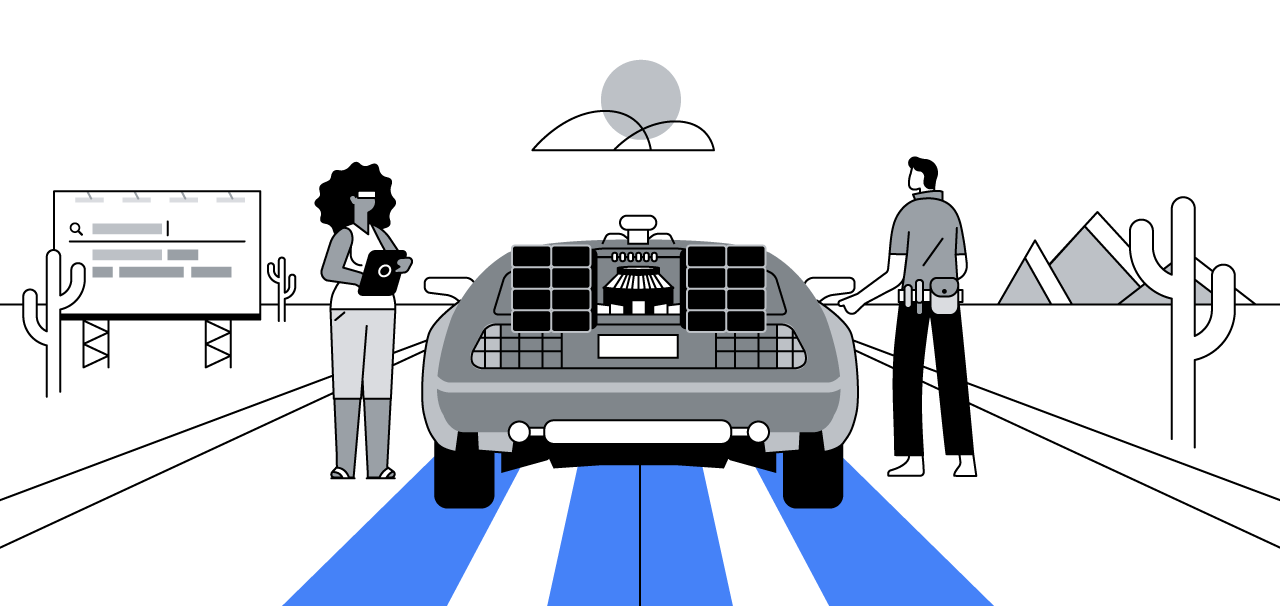Building connections with today’s consumers is neither straightforward nor easily repeated. As people toggle among channels and devices on their path to a given purchase, businesses wishing to break through the noise need to engage them within the context of their unique journeys.
To accomplish this, advertisers and agencies have increased their use of automation to help identify and reach their customers at the right moments. Further, automation helps expand what’s achievable with finite talent resources. In fact, 78% of marketers say they feel relieved that giving a larger role to digital tools (for example, automation and machine learning) will free up time to focus on other priorities.1 In the context of agency models, those priorities could include client work of greater strategic value — such as uncovering insights, identifying untapped audiences, improving website and app experiences, and consulting on digital transformation.

Agencies are at the vanguard of this industry’s embrace of automation. Marketing partners are often the earliest adopters of new technologies, dedicating time to understand emerging solutions for the future and to help clients drive better outcomes.
For a closer look at how shops are approaching this new landscape, I asked three agency leaders to share how they’ve helped clients maximize results with automation.
Test, learn, and iterate
Undergoing digital transformation is an iterative process — not a straightforward journey with a clear beginning and end, according to Joe Kerschbaum, SVP, search and growth labs at 3Q/Dept. A few years ago, the testing of automated bidding was a breakthrough moment for the agency’s internal shift to automation. And some automated features didn’t always perform well for our clients, Kerschbaum said. “But automation technologies are constantly improving. Just because something doesn't work the first time, doesn’t mean it won’t succeed later with adjustments.”
The more data you have, the better outcomes you’ll get.
“Successful testing and learning with automation is about algorithmic management and not about managing the minutiae of accounts,” said Kerschbaum. “As we incorporated automation, we recognized early on that the more data you have, the better outcomes you’ll get.”
3Q/Dept approached client Minted with the opportunity to test Performance Max, Google’s latest automated, cross-channel ad campaign. Minted began testing Performance Max with its wedding program, a major revenue driver with a strong volume of data for testing. The test yielded a 55% increase in return on ad spend and gave the agency the confidence to expand Performance Max across more product categories like graduation. Now, with most of 3Q/Dept’s clients leveraging automation, 3Q/Dept is focused on simplifying account structures to consolidate performance data and free up more time for strategic thinking.
Use data to drive a fluid, cross-channel mindset
Bruce Williams, head of performance, North America, for Dentsu Media, believes that automation, when paired with insights, has enabled his agency teams to become more agile and to take a more holistic approach to planning and budgeting.
In the case of one retail client, the Dentsu team analyzed search data that showed an increase in consumer searches for a product where the client previously had limited brand presence. In light of this finding, the client decided to increase investment in branding initiatives across video and display media to grow awareness for its brand in this product category. As the Dentsu team measures the impact of this budget shift, it’s looking to automation to help scale these branding efforts further, using Video reach campaigns and other channel diversification strategies. Additionally, automation allows it to adapt to the ebbs and flows of demand across audiences and categories in real time.
We’ve had to remodel our mindset and our client’s mindset, because automation is often thought of as a replacement for something.
“We’re investing in new disciplines to bring a strategic, cross-channel view to automation,” said Williams. “We’ve had to remodel our mindset and our client’s mindset, because automation is often thought of as a replacement for something. It’s not. It actually enhances the work of our teams who operate holistically and navigate across channels.”
By training its teams on data analysis, developing strategy, and other skills that improve their fluency with automation, Dentsu has strengthened its in-house capabilities and gained more mastery over today’s fluid, cross-channel planning environment. Williams said this improvement has become a competitive edge, allowing the agency to provide custom solutions while helping clients remove silos and make smarter, more strategic media investments.
Establish trust and shared goals
At Wpromote, VP of Paid Media David Dweck emphasizes that trust is essential to successful collaboration with clients, especially when it comes to innovation. When introducing a rising technology like automation, the agency starts by aligning with clients on core business objectives to ensure everyone is working toward the same goals.
The trust we’ve built with the client unlocks our ability to try new things and even change behaviors or expectations.
“Whenever we’re making the case to use automation, we always go back to the core objectives and challenge any assumptions we might have made around how to achieve them,” said Dweck. “That helps us reaffirm the trust we’ve built with the client, which unlocks our ability to try new things and even change behaviors or expectations. We look at potential big picture benefits and how automation will help drive performance, make an impact on the business, and support growth.”
Trust is especially important when new automation updates come into play. When Google introduced Performance Max, Wpromote worked with a leading sporting goods retailer to test the campaign type across several product lines. Wpromote was able to compare the effectiveness of the Performance Max test campaigns against the client’s other Google Ads campaigns and provide feedback directly to Google. After a few adjustments, the client used first-party customer data to guide the campaign and automate spending decisions, and Wpromote moved the majority of its Smart Shopping campaigns onto Performance Max.
Dweck emphasizes that alignment and trust are also critical to alleviating potential concerns. “When we bring our clients the opportunity to test the latest automated features, they know they must be willing to take on some risk to be an early adopter,” Dweck said. “But waiting until a new discipline is standardized means you miss out on seeing how it works, outsmarting competitors, and providing feedback that can define those standards. We want our clients to get the early advantage and feel confident about adopting new automation capabilities so they can move the business forward.”
Act on the automation opportunity
Automation has emerged as a key tool in the belt, helping agencies remain competitive and build more strategic client offerings. But, as with all emerging technologies, its adoption calls for a deliberate and iterative approach. While every business is different, these agency perspectives demonstrate that foundational principles — such as a test-and-learn mindset, a focus on data-driven improvement, and an obsession with client trust — will help ensure a successful path into marketing’s more automated future.







